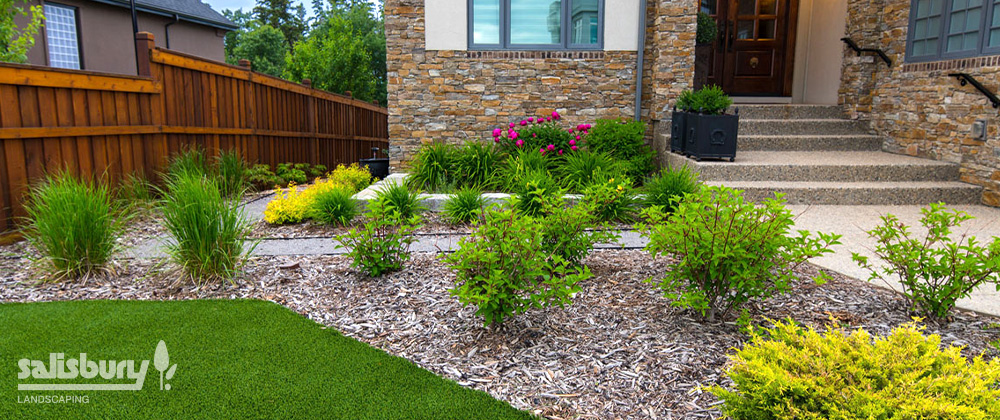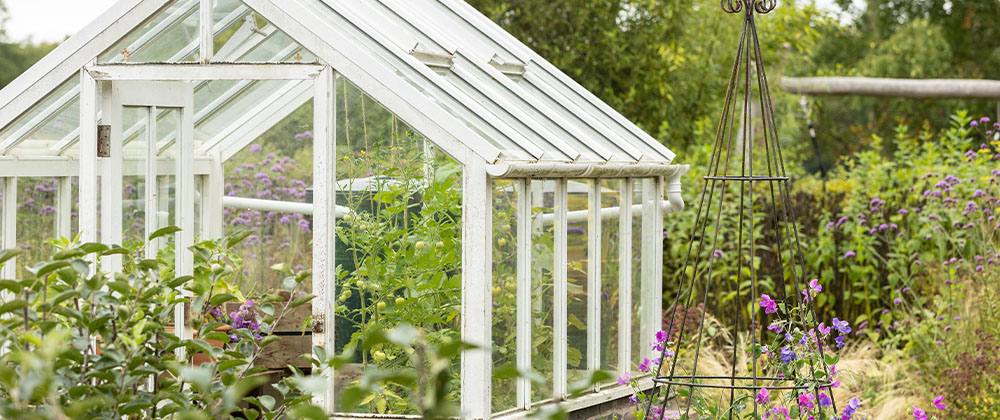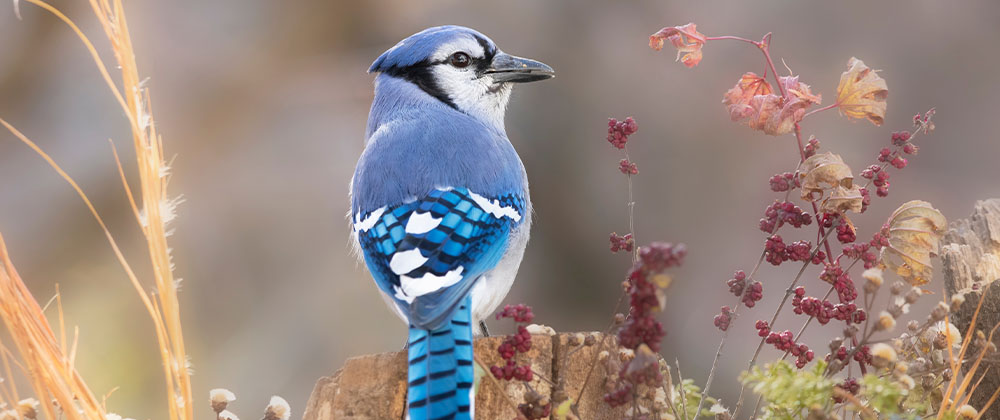This year, we completed a major design and build project for a lovely client that welcomed us to her home. Tucked in the established neighbourhood of Whitemud Creek, the property backs into a protected nature reserve filled with old-growth forest and wildlife. Redesigning and building the sloped backyard proposed challenges and opportunities alike. With the collaborative ideas of both the homeowner and the designer, the landscape transformation was a huge success, creating a serene space that feels like you’re visiting a garden in the Rocky Mountains.


The Vision
The property slopes into the Whitemud Creek ravine with a steeply graded backyard covered in stone and accented with planting beds along a stone path that leads to an iron gate. This gate provides access to the trails that lead into the ravine and facilitates a sense of community as neighbours walk by with their dogs and say hello.


Homeowner, Kathy, hired Salisbury Landscaping to design her front yard about eight years ago. This year, she reached out for help to fix a dying patch of sod and, after a thorough evaluation, it was clear that the landscape needed extensive work. Not only was the sod dying in one patch, but the lawn was becoming increasingly difficult for the homeowners to maintain. Upon further inspection, our landscaping team found that most of the retaining walls in the yard were rotting and needed replacement. After some discussion, Kathy agreed that it was time to redesign the yard.


Master Gardener and Landscape Designer Avery Armstrong focused on transforming this design to provide Kathy with a landscape that is manageable, has access to the ravine, and is a space where she can enjoy gardening and relax outside with family and friends.
Whitemud Creek Challenges
The biggest challenge for the landscaping team was access to the property. With only one access point on the side of the house with cement stairs, carrying large boulders posed a challenge, especially since access through the ravine required unobtainable permits from the city. Thanks to their ingenious problem-solving, the landscaping team was able to rig pulley systems and ensure that the product made its way safely into the design.


Another large consideration was needing to protect the two large spruce trees in the corner of the yard. These well-established trees tether the property to the ravine—a piece of the naturalized woodland inside the landscape. Any excavation would pose a threat to the roots of these trees, so Avery worked to avoid risk as much as possible.
With access point restrictions, rotted retaining walls, and two large spruce trees to protect, Avery had to rework her design multiple times until she reached the final form. Each rendition offered new ideas, and the final draft had all of the best aspects of each previous version.
Avery’s Landscape Design
When selecting stone for this project, Avery describes the importance of choosing rundle rock over smooth stone or mulch because of the massive slope in the yard; jagged rundle rock tessellates into each other, providing stability under footsteps and integrity under snowfall. With the 10-foot drop in elevation from the patio to the gate, stability was the top priority. Where smooth stone or mulch would wash out in heavy rain or snowfall, the rundle rock will support itself through the seasons.


The design ensured that new plants complemented the existing arrangement and kept everything moderately low-growing to keep the ravine visible from the back patio. The two large spruce trees tie the backyard into the treescape of the ravine, providing a beautiful alpine aesthetic. Although most of the yard is covered in rundle rock, there is an abundance of life to enjoy: perennials, trees, groundcovers, and a lush half-circle of grass just off of a sheltered patio make this outdoor space feel inviting and comfortable against the cool backdrop of the stone.
Enjoying the Transformation
As an avid gardener, Kathy managed to save over 50 perennials that Avery helped her arrange and replant once the foundation of the landscape design was complete. The new landscape design allows Kathy to enjoy her plants in a more organic manner, walking amongst them and finding balance on stability stones placed by the landscaping team, rather than assigning herself to one planter at a time.
Since most of the plants were saved from the previous design, Kathy’s yard is mostly established and will continue to grow and flourish in future seasons. The spruce trees and short cedars framing the back gate, along with many evergreen shrubs and groundcover plants, provide visual interest and texture for the winter.


Since most of the plants were saved from the previous design, Kathy’s yard is mostly established and will continue to grow and flourish in future seasons. The spruce trees and short cedars framing the back gate, along with many evergreen shrubs and groundcover plants, provide visual interest and texture for the winter.
Creating an Alpine, Woodland Landscape
Alpine landscapes are comprised of plants that typically grow at high elevations, specifically in areas like the Rocky Mountains. The cool, grey stones provide a calming and comforting foundation, while the plants inspire with their resilience and fortitude. Walking through an alpine landscape can transport you to the crisp mountain air right from your backyard.
Woodland landscapes are complementary to alpine designs; both mimic naturalized growth, but woodland landscapes replicate a lush forest instead of a mountainside. In Whitemud Creek, these design elements mimic the natural ravine just on the other side of Kathy’s fence. Woodland designs often include native species and favour plants that are hardy to the region, capturing a moment in the forest that is serene and full of thriving wildlife.
Combining these design schemes creates an escape into Alberta’s natural habitat, elevated with sophisticated elements that complement the design components, such as an iron fence and cast stones. Energetically, this landscape encourages relaxation and stability while also including the freshness of beautiful foliage and flowering plants.


Build a Foundation with Cool-Toned Hardscaping
Stone and iron are key elements in an alpine landscape design to provide a grounding atmosphere that will settle you into your space. Consider using flagstone, boulders, and rundle rock to contrast your vibrant plants. For stability throughout rundle rock, you can use small boulders and flagstone to provide a stable standing spot. When placed well, these stones blend into the landscape and create a secret pathway.
Accent with concrete patios, iron gates, and neutral-coloured bird baths for a cohesive aesthetic that is relaxing and soothing. For stable staircases on steep slopes, consider using cast stone; it’s consistent, level, and porous for stability and safety while offering that classic boulder aesthetic, as though you were scaling a mountain path.
Frame Your Space with Trees
Spruce trees are an excellent choice to provide shelter for local wildlife and anchor your landscape with their strong presence, like sentinels that watch over your garden. They provide a soft texture and a vertical element that you can use as a starting point for the rest of your design. There are many varieties of spruce trees that have slightly different preferences for growth conditions, and that grow to varying heights. The Alberta dwarf spruce, for example, only grows 10–13 feet tall, making it an excellent option for smaller yards or if you have power lines overhead. Norway spruce reaches up to 60 feet tall, as do black spruce trees, which are native to Canada. Tall spruce trees provide excellent shade and will keep your yard cool in the summertime.
Pruned cedars are perfect for framing gates or along fences for low-line privacy and full branches; pair alongside ninebark for a mixture of evergreen and deciduous trees to frame your property. For more deciduous trees, consider a mountain ash tree. Their beautiful foliage is elegant and provides marvellous shade in your landscape, and changes to hues of yellow, orange, and purple in the fall. Including a variety of colours and textures in your landscape is essential for capturing the beauty of naturalized woodland growth.
Keep a Minimal Lawn
While alpine landscapes traditionally incorporate more rock than grass, you can still have a lawn if that is your preference. Reducing your lawn size is excellent for the environment and can reduce your garden chore time immensely. A small lawn in a choice location maintains the classic aesthetic and is great for kids to play on, but with much less demand. If you still want a more expansive lawn, you can include rock beds and boulders throughout to add in the alpine elements.
Plant Perennials with a Focus on Foliage
Foliage is a key aspect of both alpine and woodland landscape designs, contributing to a naturalized aesthetic that contrasts beautifully against cool, grey stone. Here are some of the foliage plants from Kathy’s garden that contribute to this design aesthetic:


Hostas
An elegant and sophisticated option for the shady portions of your garden. Hostas have stunning foliage in various colours that contrast beautifully against grey rundle rock, adding warmth and comfort to your space.


Creeping Juniper
Function meets beauty with these stunning groundcover plants. They stabilize steep hills, prevent weeds from taking root, and provide gorgeous forest foliage that suits both alpine and woodland design aesthetics. As evergreens, they provide winter interest, poking up through the snow.


Bird’s Nest Spruce
Another excellent evergreen shrub that grows outward, with a slight dip in the centre, like a bird’s nest. It is a slow-growing plant that is beautiful to accent an empty space or as a border plant. The bird’s nest spruce offers shelter for wildlife in the winter and adds texture and greenery to your garden all year, breaking up the winter snowscape.


Globe Caragana
A compact shrub that is very easy to maintain and has high ornamental value. It provides texture, vibrant colour, and low-line privacy, perfect for all-season interest. This variety is incredibly tolerant to city pollution, making it an excellent choice for bringing robust and thriving foliage into a city garden.


Arborvitae
An evergreen that is well-loved for its dense and narrow growth, making it an excellent option for privacy and year-round texture. It has flat sprays of “needles” that are gentle to the touch, adding softness to your landscape in contrast to the jagged edges of rock and boulders.


Ostrich Fern
For a feathery-softness in the garden, consider an ostrich fern. They have gorgeous green fronds that can reach up to four feet long, adding a spray of vivacity to your landscape. In the autumn, the fronds transition to burnt red and orange colouration. They are beautifully paired with flowering plants or as an accent to larger landscape features.
Add Selective Pops of Colour
While foliage and stone are handsomely paired, scattered bursts of colour add a layer of beauty that elevates the visual interest of the landscape. Here are some subtle but impactful flowering plants from Kathy’s yard that you can incorporate into your landscape to recreate this aesthetic:


Daylily
A radiant perennial with six-petalled flowers and a spectacular range of colours. They require minimal care and are an excellent option for dividing and spreading through your garden over the years for a naturalized aesthetic.


Astilbe
Wistful and lacey are the best terms to describe astilbe. It has lengthy plumes of flowers with dense, jagged foliage, together adding texture to your garden. These are an excellent option for shaded gardens and will continue to look beautiful as they dry into the cool season.


Annabelle Hydrangea
A type of Hydrangea arborescens that is beautifully suited to areas with morning sun and afternoon shade. The Annabelle’s large flower heads are a beautiful accent against its vibrant green foliage, guiding your eye through the landscape.
The lasting impression of this garden is one of stability, ease, and beauty. Kathy often receives compliments from passing neighbours on a walk through the ravine, as she spends time enjoying her garden instead of working in it. We are proud of this landscape and grateful to Kathy for letting us visit and share the finished product with us!
If you’re considering redesigning your landscape or are looking for more landscape ideas in Edmonton, contact our team at Salisbury Landscaping or visit one of our greenhouses in St. Albert or Sherwood Park. We also offer DIY landscape consultations if you need guidance for your own projects.






